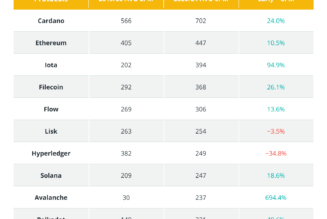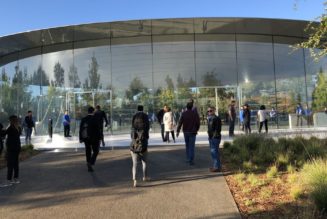I know this is an unachievable fantasy, but there has to be some kind of middle ground.
:format(webp)/cdn.vox-cdn.com/uploads/chorus_asset/file/24209615/IMG_4794.jpg)
I’m an organized person. I have to be. Writing is a deadline-oriented job, and I have the working memory of an elderly goldfish. Gone are the days when I could store an entire week’s worth of events, deadlines, and schedules in my head. Now, all of that stuff needs to live somewhere tangible.
The problem is, there isn’t a single app that can handle the majority of my needs. By my count, there are at least 10 productivity apps I use on a daily basis to function — and they all suck.
There’s Airtable for work projects so my editors can see what I’m working on — just one of the project management apps I’ve used in my career. There’s also been Basecamp, Asana, Trello, and in one instance, a rickety Excel sheet maintained by sweat and tears. They all do the same thing — provide a big-picture view of a team’s projects, completion status, and deadlines. And yet none have ever been enough to be the sole means of maintaining an editorial calendar at any of the publications I’ve ever worked at. There are always supplementary Google Docs, spreadsheets, and Slack channels. I end up spending a good hour every day replicating the same workflows and information in different formats.
Most project management software also doesn’t include an elegant built-in daily to-do list. This is bananas. No project is ever done in a single step. If I’m writing a story, there’s testing and research, then there’s photography and art, then there’s the actual writing, followed by a multistep editing and publishing process. Airtable, Asana, Trello — they’re alright for showing everyone my progress, but this isn’t everything I’m responsible for. There are dozens of subtasks, emails, and calendar events that Airtable doesn’t handle. That’s not gonna work for my goldfish brain. So I end up needing a to-do app.
That’s led me down a rabbit hole of trying several of the thousands of to-do apps out there. But no matter which ones I’ve tried, they have, at most, 75 percent of the features I need or want — which is how I ended up with not one, not two, not three, but four to-do apps.
There’s Focus To-Do for work and personal errands. It’s a mashup of a Pomodoro timer and a to-do list — which has been vital in helping me shake off my pandemic-induced brain fog. Then there’s Todoist. While I love Focus To-Do, the one thing it doesn’t do is let me create lists that aren’t time-based or integrate with my email app. Hence, why I still use Todoist to cover Focus To-Do and Airtable’s gaps.
And neither of these apps is great at helping me keep a housecleaning schedule, nor are they helpful for keeping my plants alive. Hence why I also use Tody and Planta.
:format(webp)/cdn.vox-cdn.com/uploads/chorus_asset/file/19327834/verge-whatsapp-notification-2040pxl.0.jpg)
You know what’s worse? None of these apps are helpful for inventory management — both in terms of managing my review units and my pantry. They’re also useless at maintaining databases. That’s why I also use Notion, an app I have an intense love-hate relationship with. While Notion is highly customizable and comes with a ton of premade templates, it’s got a gigantic learning curve. I spent four hours building multiple databases just to keep track of my bylines, sources, product inventory, running logs, test logs, and meal planning. It works pretty well, but it’s also a total time suck to maintain because lord knows I don’t have the willpower to figure out how to automate this thing.
A few months ago, I got so fed up with everything, I ended up buying an old-school planner. Unlike using myriad apps, I could keep all of this information in one referenceable notebook. But the problem with analog notebooks is that the information in them isn’t easily shareable with people or collaborators. So once again, I ended up adding yet another productivity tool to my arsenal.
This is just the tip of the iceberg. I haven’t even gotten into calendar apps, note-taking apps, video conferencing apps, transcription apps, or communication apps like Slack. (By the way, any time someone creates a new Slack or Discord channel, a part of my soul dies.) But the story is the same. I end up trying a bunch of different apps in search of the One That Can Do It All, only to settle for the one I hate least that does 75–85 percent of what I need.
I know there is no perfect solution. A singular productivity tool that works for everyone is a unicorn — beautiful, perfect, and completely fictional. Still, there has to be some sort of middle ground between an unachievable fantasy and the current landscape. I would happily settle for two, maybe three apps. Honestly, less than 10 is all I’m asking for.
Until then, my phone and laptop will be a cluttered mess of productivity apps that only do half their jobs.









